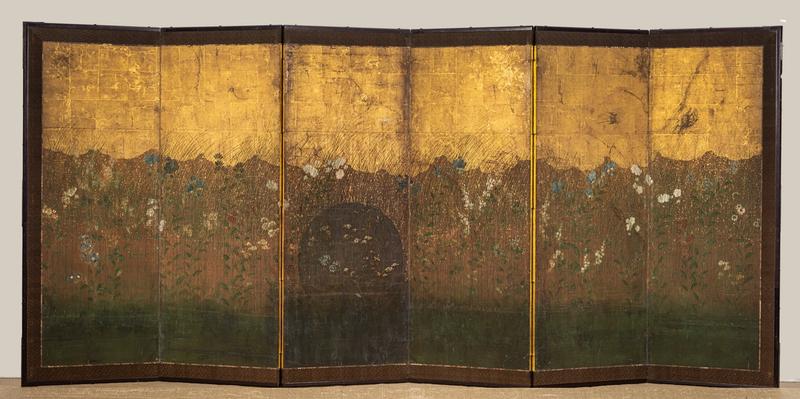A six-fold paper screen painted in ink and colour on a gold ground with the scene of the Plains at Musashino where the silver moon is rising amongst hagi (bush clover), kikyō (bellflower), nogiku (asteroideae), nadeshiko (fringed pinks) and other autumnal grasses.
Japan, 17th century, Edo period.
In the realm of meisho-e (pictures of famous scenic places), the portrayal of a large full moon or sun viewed through autumnal grasses represents Musashino (the Musashi plain).
The plain of Musashi was a large flat expanse of land west of Edo, most famous for the illusion of the moon rising straight out of the grasses and similarly the sun appeared at its largest size and deepest shade of red just before setting into the horizon.
A poem celebrating this famous landscape was written by the aristocrat Minamoto Michikata (1189–1238) and is included as no.425 in the imperial poetry anthology of c.1265, the Shokukokin Wakashu (Collection of Ancient and Modern Poems Continued).
Musashino wa
tsuki no irubeki
mine mo nashi
obana ga sue ni
kakaru shirakumo
On the Musashi plain
there is no peak
for the moon to enter
white clouds catch in
the tips of the flowers.
Screens

An eight-fold screen depicting flowers of the four seasons

A pair of six-fold screens depicting ‘One Hundred Boys'

A pair of six-fold screens depicting the maritime routes of the Seto Inland Sea and of the north of Kyushu Island
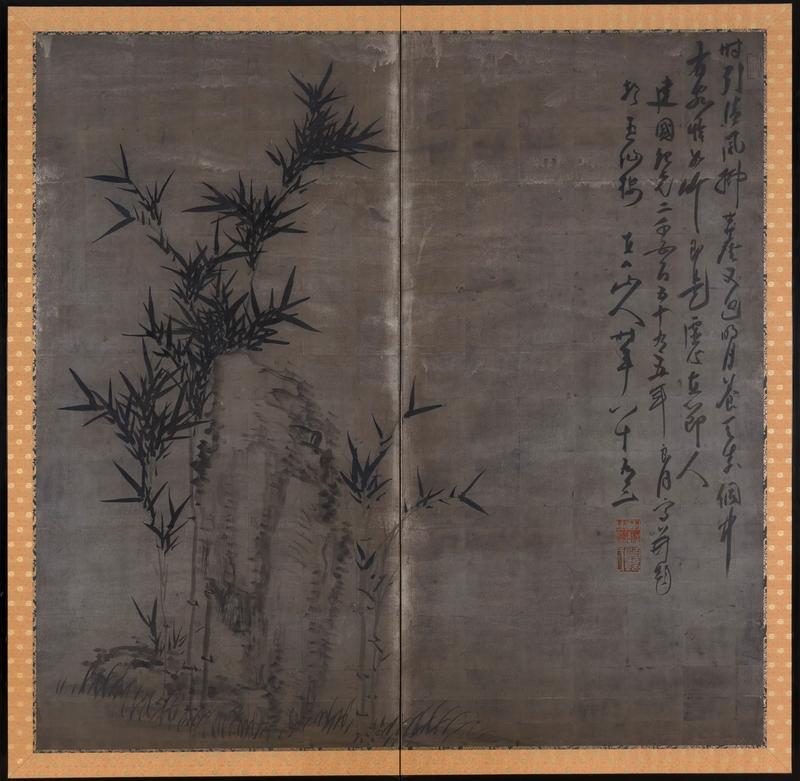
Tanomura Chokunyu - screen painted in ink on a silver ground with a rock, bamboo and calligraphy

A pair of six-fold paper with sweetfish

A pair of six-fold screens with clematis

A six-fold screen with a covey of uzura and chicks

A six-fold screen with grape vines

A two-fold screen with chrysanthemums

A pair of six-fold paper screens with the Plains at Musashino

A pair of four-fold screens with kuri flowers

Four fusuma by Nagasawa Rosetsu

A six-fold screen with autumn flowers and grasses
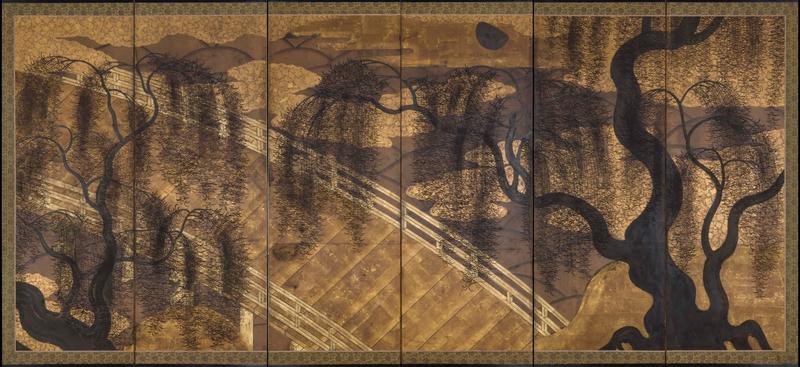
A paper screen with the Uji river and its bridge

A pair of six-fold screens with scattered fans
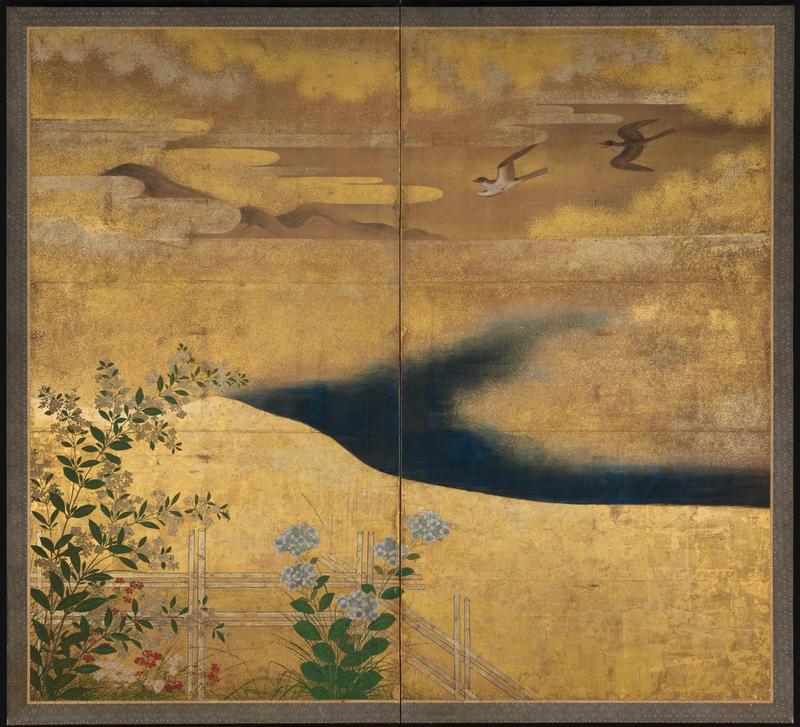
A two-fold screen with a river landscape

A two-fold screen with court ladies

A pair of six-fold screens with poem slips from the 17th century

A two-fold screen with the Uji River and its bridge
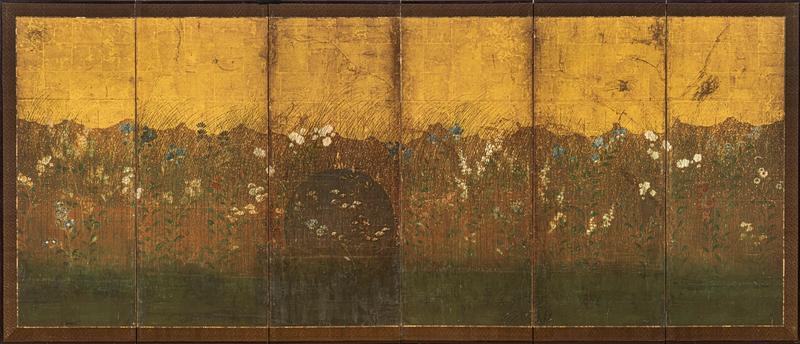
A six-fold paper screen with the Plains at Musashino

A six-fold paper screen with poem slips
